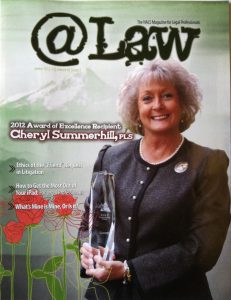 You might recall Rick’s epic 6-part blog about the Oracle v. Google case and what it teaches about copyright protection in software. A formal (and condensed) version of those posts has been published by @Law in its Winter 2012–13 edition as an article: “The Limits of Copyright Protection in Software After Oracle v. Google.” @Law is published by NALS, which is the national association of legal professionals (the “S” is from long-ago when it was an association of legal secretaries, but as responsibilities have drifted from old-style legal secretaries to new-style paralegals and junior associates, that term is under-inclusive now). You might remember @Law by its previous name, The Docket (which is now an e-zine published by NALS). Here’s the first paragraph:
You might recall Rick’s epic 6-part blog about the Oracle v. Google case and what it teaches about copyright protection in software. A formal (and condensed) version of those posts has been published by @Law in its Winter 2012–13 edition as an article: “The Limits of Copyright Protection in Software After Oracle v. Google.” @Law is published by NALS, which is the national association of legal professionals (the “S” is from long-ago when it was an association of legal secretaries, but as responsibilities have drifted from old-style legal secretaries to new-style paralegals and junior associates, that term is under-inclusive now). You might remember @Law by its previous name, The Docket (which is now an e-zine published by NALS). Here’s the first paragraph:
When Oracle sued fellow technology giant Google for using the “structure, sequence and organization” of Oracle’s Java API in Google’s Android mobile operating system, Oracle revived a debate about the proper scope of copyright protection for software as old that protection itself.1 There was no question that Google did not literally copy the API but did copy its organization. There was also no question that generally software’s structure can be copyrighted. The question was when.
Of course, if you’re already a regular reader of our blog (which will be getting Christened pretty soon!), you already know how this works out for Oracle.

